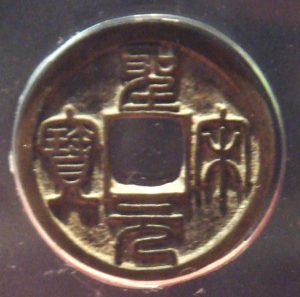The Song Dynasty (960-1279) is known for its economic expansion, often referred to as a “commercial revolution.” This period was marked by improved agricultural technologies, gunpowder, new printing techniques, and domestic and foreign trade growth. These advances led to a money economy and increased prosperity for the people of the Song Dynasty.
Agriculture Advancements
During the Song Dynasty, agriculture was the mainstay of the economy. The invention of the steel plow and the seedling horse increased crop yields, while bamboo water wheels and fertilizers improved soil quality and plant growth. These innovations helped increase the amount of farmland under cultivation and boosted agricultural production. It allowed farmers to produce more food, which led to a population boom. The increase in population created a larger market for goods and services, driving economic growth.
New Printing Techniques and the Spread of Knowledge
The invention of movable type printing and papermaking facilitated the spread of information. The mass production of texts increased literacy rates and made knowledge more accessible to the general population. For example, these innovations allowed for the instruction of properly using agricultural tools and techniques to be shared with the rest of society, which further increased agricultural productivity. The spread of knowledge helped to drive economic growth by improving communication and stimulating new ideas and innovations.
Growth of Domestic and Foreign Trade
The construction of efficient main road networks and an extensive canal system improved transportation and communication, making it easier to trade goods domestically and internationally. The agricultural surplus could be easily transported to urban markets, while manufactured goods could be shipped to distant lands. The rise of cities as centers of trade and commerce also contributed to the growth of domestic and foreign trade. Song Dynasty merchants traded with their counterparts in other parts of Asia, Europe, and Africa. They also established trading colonies in these regions. The growth of trade boosted the economy by increasing the flow of goods and money.
Merchants and Government Monopolies
The accumulated wealth of the Merchant class equaled, or even exceeded, that of the scholar-officials who formed the Song Dynasty’s ruling elite. The merchants used their wealth to finance private enterprises and to engage in speculative activities. The government also imposed monopolies on certain industries to generate revenue and secure resources vital to the empire’s security, such as salt, iron, steel, and chemicals for gunpowder.
Use of Gunpowder in Warfare and Industry
The Song Dynasty was also the first to use gunpowder in warfare. The development of gunpowder led to the invention of new weapons and tactics that greatly increased the Song army’s military capabilities. In addition to its military applications, gunpowder was used in mining and metallurgy to extract metals from ores. It was also used to produce fireworks and to power the newly invented printing press. Gunpowder was created through a chemical reaction between potassium nitrate, charcoal, and sulfur. The Chinese had used saltpeter for centuries in the production of fireworks. However, it was not until the Song Dynasty that the Chinese discovered how to combine saltpeter with charcoal and sulfur to create gunpowder.
Development of Paper Money
During the Song Dynasty, a money economy began to develop. They still used copper coins, which were the basic unit of currency in China for centuries, but paper currency was introduced to supplement the coinage. Long, heavy strings of coins were used to handle large transactions, but since trade was growing, merchants needed a way to avoid carrying large amounts of metal coins over long distances. So they started using paper money. Due to the invention of the movable type printing press, the production of paper money became possible. Then the system was taken over by the government in the 1120s. They began issuing paper money, becoming the world’s first government-issued paper currency.
